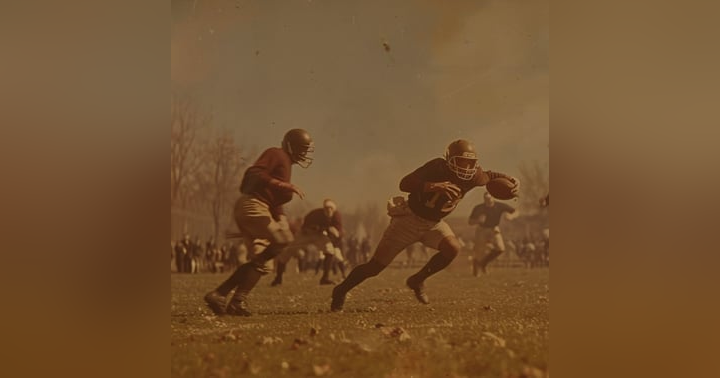The Rich History and Cultural Significance of Bivalve Oyster Packing

By Tom Ritter
For decades, the small town of Port Norris, New Jersey, nestled along the banks of the Maurice River, has held a hidden gem - the Bivalve Oyster Packing Houses and Docks. This unassuming town, once known as the "oyster capital of the world," has a rich and intriguing history that has left a lasting impact on the local community, the environment, and the oyster packing industry as a whole.
The Birth of an Industry
Founded in 1946, the Bivalve Packing Company has been a cornerstone of Port Norris's heritage. It is home to the iconic East Point Brand Oysters, and today, it stands as a testament to the enduring legacy of oyster packing in the region.
Steve Fleetwood, who has led the operations for over 25 years, has been instrumental in preserving the legacy of East Point Brand Oysters. These oysters, grown locally and harvested under the strict guidelines of the National Shellfish Sanitation Program, continue to be a source of pride for the community.
"Our standard is to ship only the freshest, quality oysters. East Point Brand Oysters are unloaded from our boats in cages and immediately refrigerated," says Fleetwood.
The Glory Days
To understand the significance of oyster packing in Bivalve and Port Norris, we must journey back to the early 20th century. During this time, these towns were a bustling hub for oyster harvesting and processing, earning them the title of the "oyster capital of the world." The oysters were harvested using oyster schooners from the Delaware Bay and brought to the docks along the Maurice River.
The arrival of the Bridgeton and Port Norris Railroad in 1872 was a game-changer for the oyster business along the Maurice River. This railway allowed for efficient transportation of oysters to markets in Philadelphia and New York. By the 20th century, Delaware Bay oysters, shipped from the Maurice River, were a culinary delight served from Baltimore to New York and as far west as Kansas City.
"The public's appetite for oysters was the driving force to harvest the oyster. The oyster industry was managed much like farming," explains the historical records. "Oysters grew naturally in the upper Delaware Bay public seedbeds. In the spring, they were transplanted to the privately leased harvest grounds located in the Maurice River Cove. Oysters grew fatter and tastier in the higher salinity waters and were harvested during the winter season."
Environmental Impact and Challenges
However, the oyster industry's success in Bivalve and Port Norris faced significant challenges in the latter half of the 20th century. Two parasites, MSX (Haplosporidum nelsoni) and Dermo (Perkinsus marinus), devastated the oyster population in the Delaware Bay, leading to a decline in the industry.
These environmental challenges had a profound impact on the local communities. Once wealthy and thriving, Bivalve and Port Norris found themselves grappling with economic hardships. Today, Port Norris is among the poorest towns in the most impoverished county in the state.
 The Cultural Legacy
The Cultural Legacy
Despite the challenges, the cultural legacy of Bivalve and Port Norris endures. The stories of millionaires who once resided here, thanks to the oyster industry, continue to be told. The remnants of a thriving oyster packing community remain, bearing witness to a bygone era.
The Bivalve Oyster Packing Houses and Docks, now listed on the National Register of Historic Places, serve as a reminder of the town's illustrious past. They stand as a testament to the industrious spirit of the community and its vital role in shaping the oyster packing industry in the region.
The Future of Oyster Packing
As we reflect on the history and cultural significance of Bivalve oyster packing, we also look to the future. The industry has weathered storms, both environmental and economic, and continues to adapt to changing times.
Modern oyster packing practices, including non-structural and structural aquaculture methods, have evolved. These practices, while respecting environmental sustainability, aim to revitalize the industry. The use of structure, such as rack and bag systems or bottom cages, allows for better growth and marketability of oysters, meeting the demands of consumers who seek unique half-shell products.
Today, oysters from Bivalve Packing Company carry a tag with all pertinent information about the product source, ensuring transparency and quality control. The commitment to delivering the freshest, locally grown oysters remains unwavering.
A Brighter Horizon
The story of Bivalve oyster packing is not just a tale of the past but a beacon of hope for the future. As the industry embraces sustainable practices and innovation, there is potential for revitalization.
Port Norris may have faced hardships, but it still carries the legacy of its oyster-rich history. Visitors and locals alike can explore the Bivalve Oyster Packing Houses and Docks, immersing themselves in the heritage that has shaped this community.
So, as we savor a plate of East Point Brand Oysters, let us also savor the history, the resilience, and the cultural significance of Bivalve oyster packing. It's a story worth telling and preserving for generations to come.
References
Please Support
Bridgeton Beacon Programs





